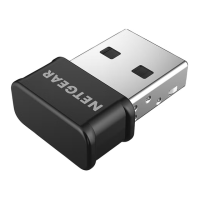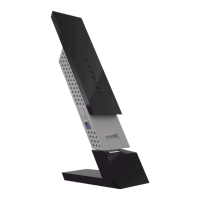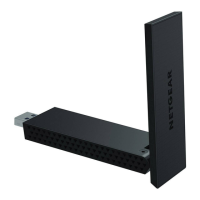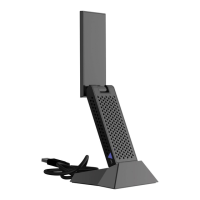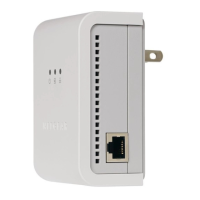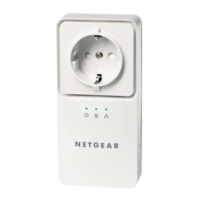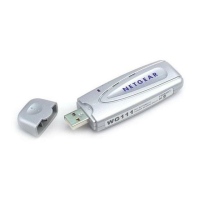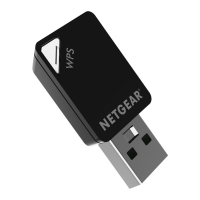
Do you have a question about the NETGEAR A6100 and is the answer not in the manual?
| Interface | WLAN |
|---|---|
| Connectivity technology | Wireless |
| Wi-Fi | Yes |
| Wi-Fi band | Dual-band (2.4 GHz / 5 GHz) |
| Frequency range | 2.4 - 5 GHz |
| Wi-Fi standards | 802.11a, 802.11b, 802.11g, Wi-Fi 4 (802.11n), Wi-Fi 5 (802.11ac) |
| Top Wi-Fi standard | Wi-Fi 5 (802.11ac) |
| Networking standards | IEEE 802.11a, IEEE 802.11ac, IEEE 802.11b, IEEE 802.11g, IEEE 802.11n |
| Maximum data transfer rate | 600 Mbit/s |
| WLAN data transfer rates supported | 150, 433 Mbit/s |
| Internal | No |
| Component for | PC/Thin Client/Tablet/Server/Workstation |
| Product color | Black |
| Windows operating systems supported | Windows 10, Windows 7, Windows 8, Windows 8.1, Windows XP |
| Depth | 18.4 mm |
|---|---|
| Width | 36.1 mm |
| Height | 8.1 mm |
| Weight | 8 g |
Guide on installing the NETGEAR wireless adapter software and hardware.
Learn how to check wireless network information before joining.
Step-by-step instructions for connecting to a wireless network via WPS.
Using the NETGEAR genie software to connect to a wireless network.
How to connect to wireless networks that do not broadcast their SSID.
Installing the adapter driver without the NETGEAR genie software.
How to check the status and details of your wireless connection.
Instructions for checking and installing software updates for the adapter.
How to gather system, IP, driver, and site survey information.
Accessing details like MAC address, security type, and region settings.
Steps to remove the adapter software and NETGEAR genie.
Solutions for common issues like no LED, no icon, or connection problems.
Answers to common user queries about USB ports, speed, and IP addresses.
Lists the default configuration parameters for the mini adapter.
Detailed technical features and requirements of the mini adapter.
General user requirements for operating radio devices in compliance with national laws.
Specific FCC rules for operating the device in the United States.
Information on Specific Absorption Rate (SAR) and RF exposure limits.
